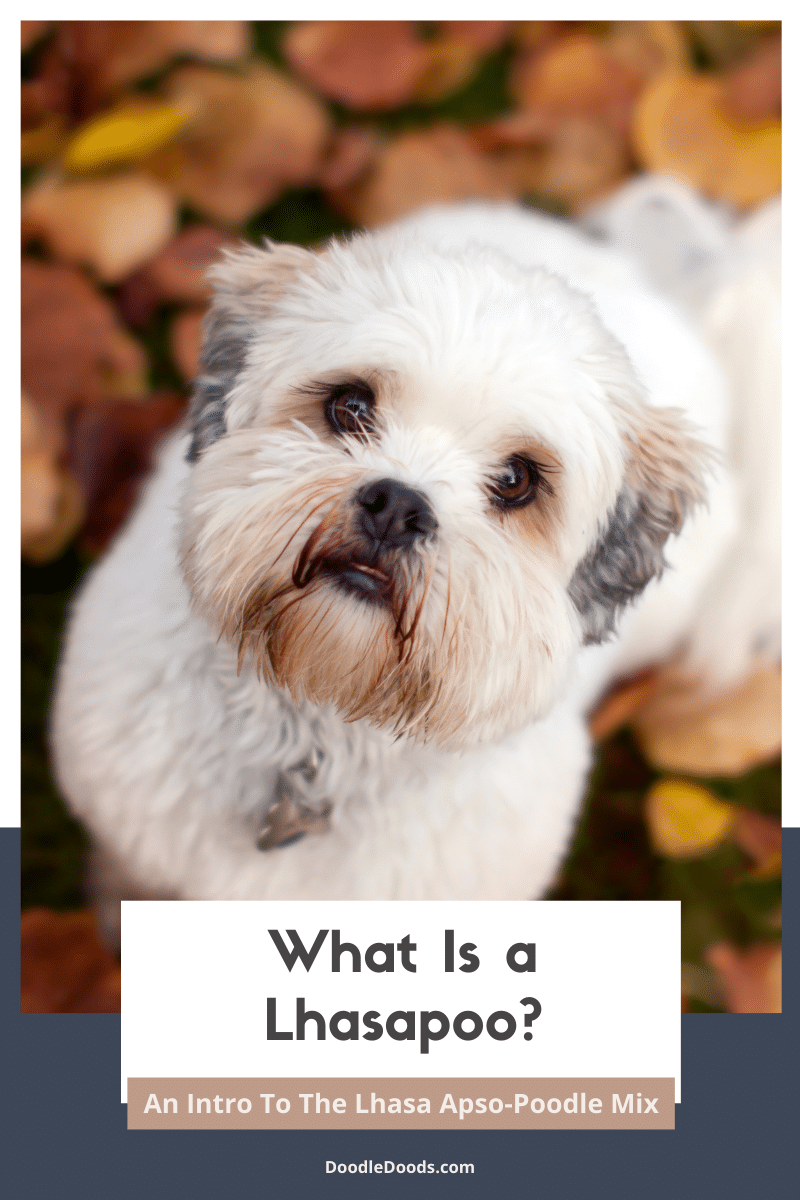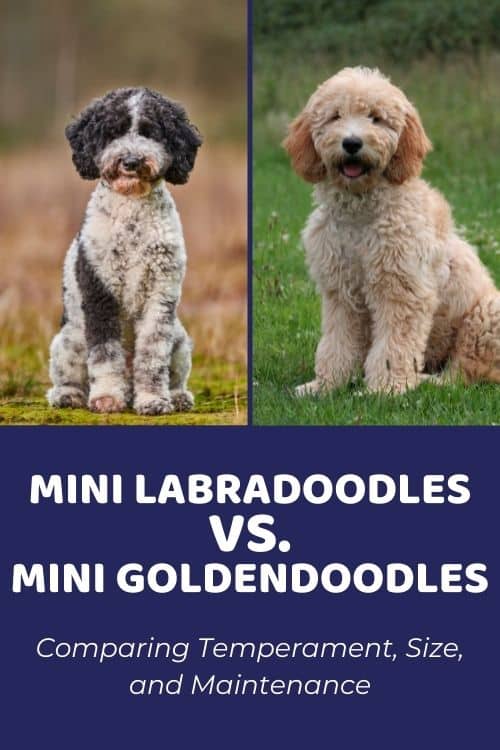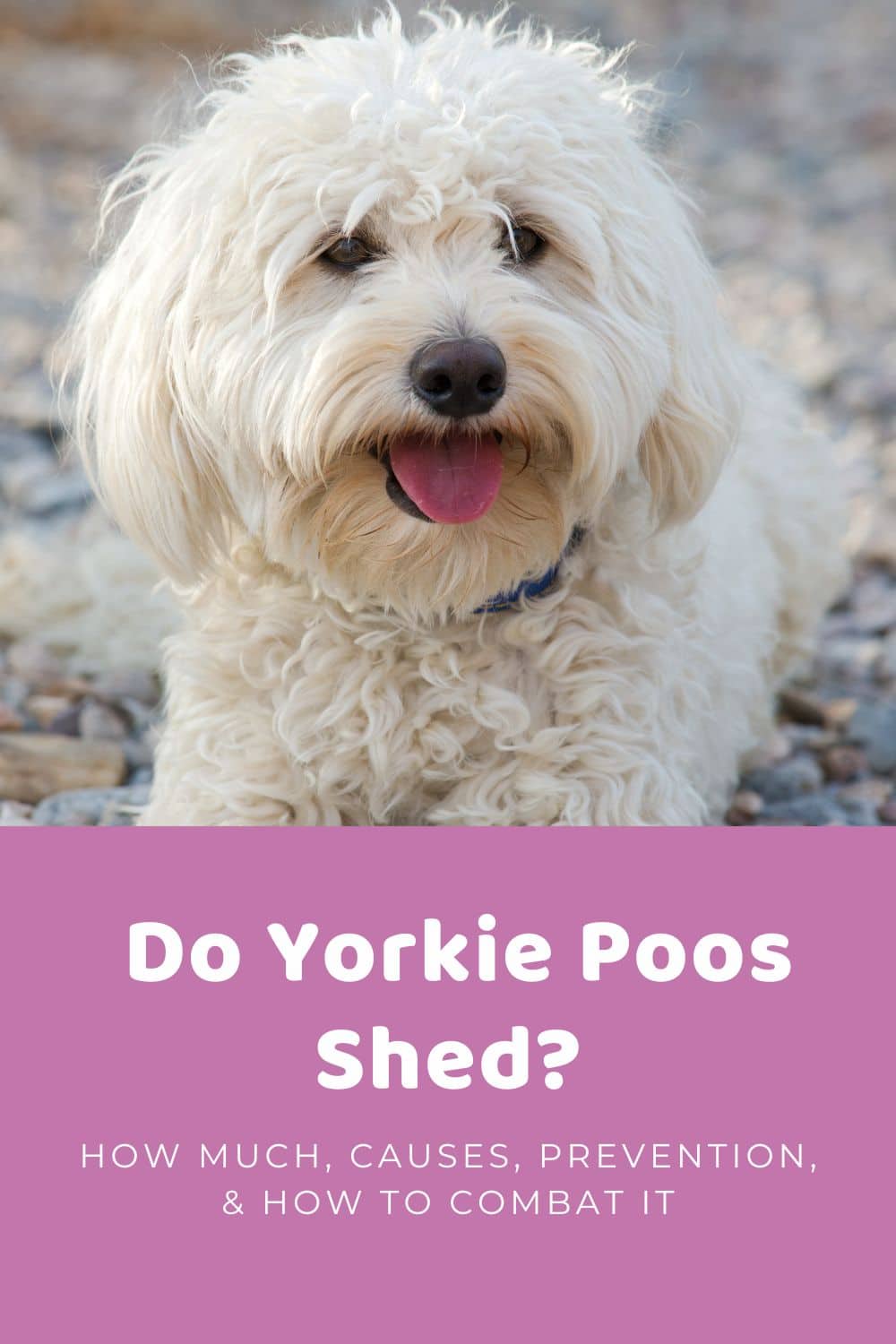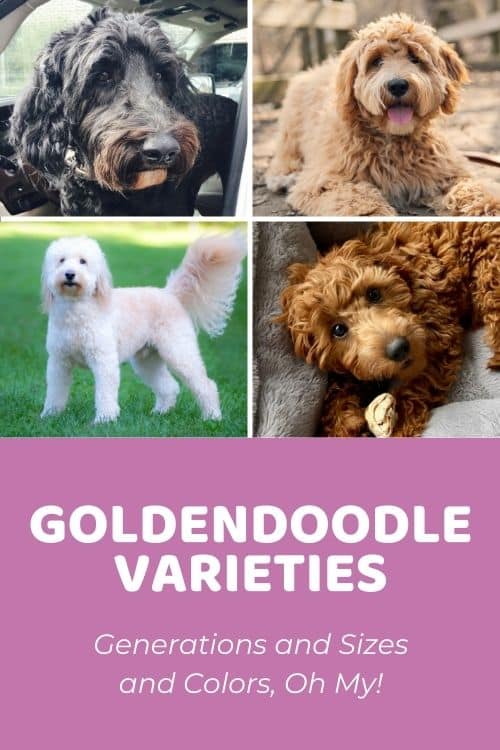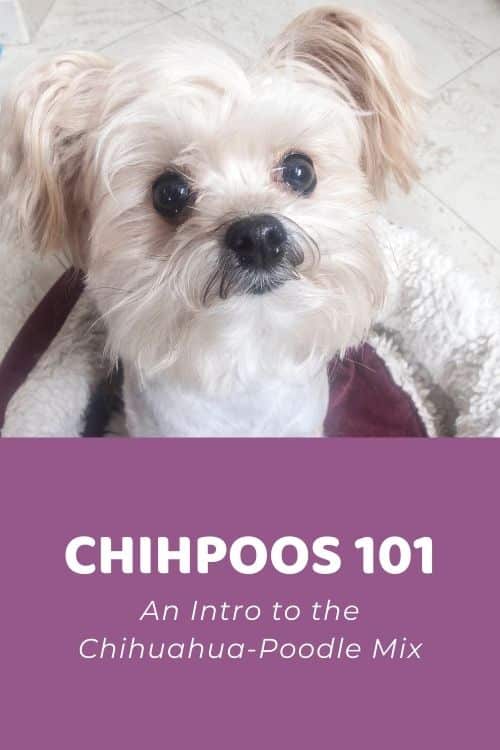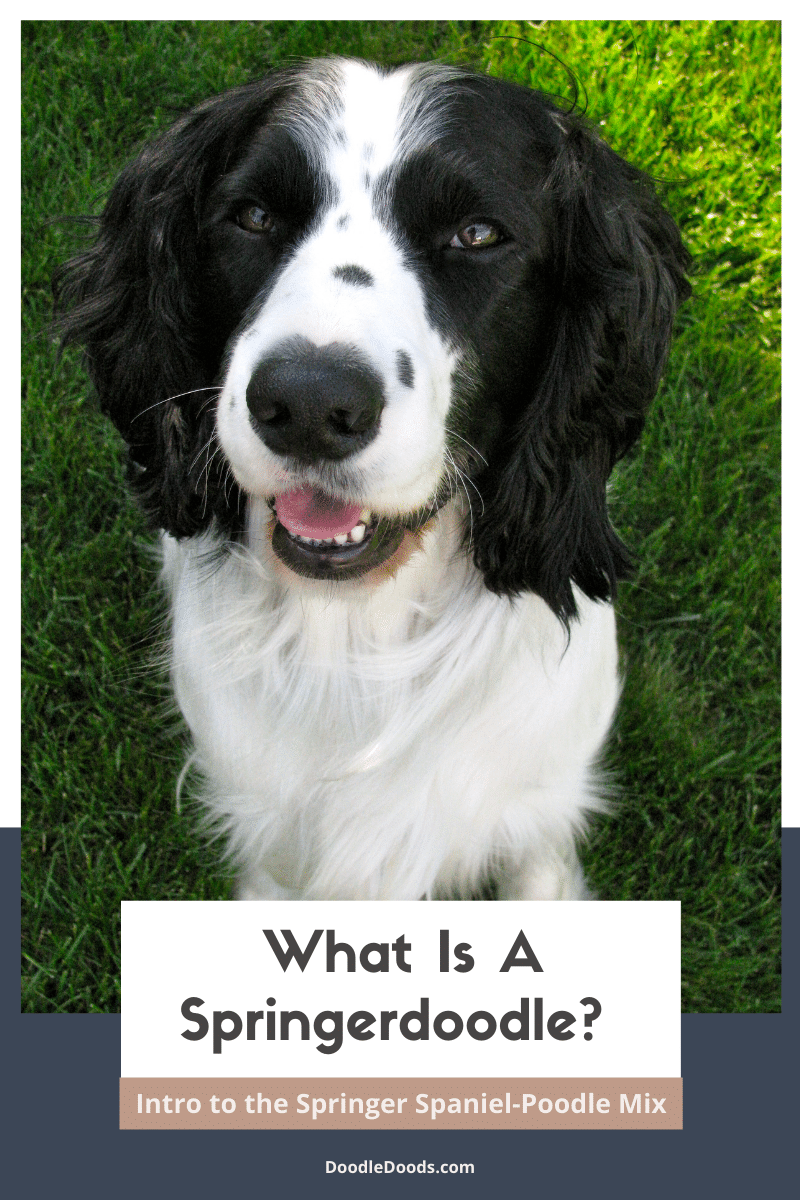The Lhasapoo is a small-sized Poodle mix that’s quickly becoming a fan favorite amongst Doodle circles. To be fair, there’s not a single purebred or Doodle breed we didn’t like! Still, in this guide we’re going to be talking specifically about the Lhasa Apso-Poodle mix. Whether you’d like to learn more about the Lhasapoo’s personality, looks, health, exercise needs, or anything else, we’ve got you covered.
Table of Contents
- What Is A Lhasapoo?
- Lhasapoo Physical Appearance
- Lhasapoo Pictures (Puppy & Adult)
- Lhasapoo Size: How Big Will A Lhasapoo Get?
- Variations & Generations
- Personality & Temperament
- Lhasapoo Health: Do Lhasapoos Have Health Problems?
- Lhasapoo Lifespan: How Long Do Lhasapoos Live?
- Lhasapoo Exercise Needs
- Training Requirements
- Lhasapoo Coat Care & Grooming
- Where Can You Get Lhasapoo Puppies?
- Lhasapoo: FAQ
What Is A Lhasapoo?
The Lhasapoo is a hybrid breed that’s a mix of the Lhasa Apso and the Poodle. The Lhasa Apso-Poodle mix is a friendly, a bit mischievous, yet intelligent little pup that possesses the traits of both the Poodle and Lhasa Apso. Thanks to their Poodle genes, they’re quite low-shedding dogs, making them great pets for people with allergies.
The purebred Lhasa Apso is easily recognized by its super long, straight hair. Meanwhile, the Poodle is also well-known for its distinguishable looks. Most notably, its super curly coat that can flaunt countless awesome haircuts.
Both Lhasa Apsos and Poodles have long histories dating back centuries. The Lhasa Apso has existed since 800 A.D and they originate from Tibet. Although Poodles are a much younger breed compared to the Lhasa Apso, they’ve also been around for centuries, originating from Germany as waterfowl hunting dogs.
For the Lhasapoo crossbreed, the most common type of Poodle used in the mix is the Miniature Poodle. If you’re lucky enough, you might also come across a Toy Lhasapoo with a Toy Poodle parent. Either way, Lhasapoos are always small-sized pups, much like the purebred Lhasa Apso.
Even though both Poodles and Lhasa Apsos are very popular purebreds that have been around for a long time, the Lhasapoo crossbreed is still quite a rare and new Doodle breed that not many have heard of. That’s why we decided to do the legwork for you and gather here everything we could find out about the adorable Lhasa Apso-Poodle mix.
Lhasapoo Physical Appearance
Lhasapoos are small and sturdy dogs with typically long, shaggy hair that’s either curly, wavy, or straight. Like most other Doodle breeds, they tend to have floppy ears. But overall, a Lhasapoo’s appearance will mostly be determined by which genetics are more dominant – either the Poodle’s or Lhasa Apso’s.
Colors
The Lhasapoo can inherit numerous coat colors and patterns from its parents. Their coat colors can range from the darkest blacks and browns to much lighter golden, cream, and white hues. And, of course, everything else in between that’s seen in both Poodles and Lhasa Apsos. Some Lhasapoos also inherit patterned coats like black and tan, brindle, sable, or parti. It’s also not uncommon for them to inherit the purebred Lhasa Apso’s black mask with tips as if your Lhasapoo pup is wearing a black mask. How cute!
Moreover, some Lhasapoos may also change color once they start reaching adulthood due to a fading gene. This is more common in darker-colored Lhasapoos where the change is more noticeable. So, a black Lhasapoo may fade into lighter gray or silver tones. Similarly, a brown Lhasapoo can fade to creamier colors.
Coat, Shedding, & Hypoallergenic Level
As we mentioned, Lhasapoos can either have curly, wavy, or straight coats. But that’s not the only difference between these three coat types. Keeping in mind that the purebred Lhasa Apso is a double-coated, straight-haired dog, whereas the Poodle is a single-coated, super curly pup, there are some differences also in their grooming requirements as well as shedding and hypoallergenic levels.
Curly-coated Lhasapoos are the most hypoallergenic of the bunch as their Poodle genes are more dominant. Although this makes a curly-haired Lhasapoo a great pet for someone who’s looking for a very allergy-friendly and a low to non-shedding dog, you must also remember that these Doods require the most grooming and maintenance. Curly coats are notoriously prone to matting. That’s because any loose dog hair, dirt, and debris easily gets stuck inside the coat, leating to knots and mats.
On the opposite side we have the straight-coated Lhasapoo that resembles more the purebred Lhasa Apso. Fortunately, even purebred Lhasa Apsos aren’t very heavy shedders. However, the double coat may still pose issues for people with severe dog allergies. As a straight-haired Lhasapoo’s coat can grow very long, regular brushing and grooming is necessary to prevent matting and to keep their coat healthy and looking great.
But the most common type of Lhasapoo coat is the wavy combination coat. The perfect balance between its parental purebreds, the wavy coat is generally the easiest to manage. It’s usually not as prone to matting nor does it shed very much.
Lhasapoo Pictures (Puppy & Adult)
We know how adorable the Poodle looks like and how cute the Lhasa Apso is. But what about their Lhasapoo offspring? See for yourself:
| Black Mastidoodle | @lucy_the_mastidoodle |
| Yellow and Gray Mastidoodle | @rosie_the_mastidoodle_cgc |
Lhasapoo Size: How Big Will A Lhasapoo Get?
The Lhasapoo is a small-sized dog that usually weighs between 10 and 20 pounds as an adult. Their height ranges between 9 and 13 inches when measured from the shoulder.
| Lhasapoo | |
| Weight | 10-20 pounds |
| Height* | 9-13 inches |
| When Full-Grown? | 8-12 months |
* A dog’s height is measured from the withers, which is the highest part of their shoulder blades.
Because the purebred Lhasa Apso is already such a small dog, they’re almost always crossed with Miniature Poodles that only weigh around 10 to 20 pounds when fully-grown. Of course, there’s also the possibility of adding the Toy Poodle into the mix with its average weight ranging between 4 and 12 pounds. As you can imagine, these pups will be even smaller than the 10-20 pound range.
Indeed, there’s also the much larger Standard Poodle. But with their weight ranging between 38 and 70 pounds, we don’t see that these dogs will ever be introduced into the mix. After all, one of the Lhasapoo’s main appeals is its small size, much like the purebred Lhasa Apso’s.
Variations & Generations
We’ve mentioned a couple of times how a Lhasapoo’s appearance, size, and other characteristics can vary depending on which purebred’s genes are more dominant. But is there a way to predict these traits and genes beforehand?
Although the most surefire way to predict the outcome is by extensive genetic testing, there’s another way how breeders can strive for certain genetics and traits.
With Poodle mixes and other hybrid breeds, there are numerous ways to breed a litter of puppies. We can either take a purebred Lhasa Apso and a purebred Poodle and produce a litter of Lhasapoos. These pups being the direct offspring of both purebreds, it can be difficult to breed for specific traits.
But, there’s also the possibility of crossing a Lhasapoo back to a Poodle. And so on and so forth. So, if a breeder’s goal is to breed for certain traits, they can specialize in different Lhasapoo generations to maximize the predictability and consistency of the litter. Let’s take a closer look:
| 1st Parent | 2nd Parent | % Lhasa Apso* | % Poodle* | |
| F1 Lhasapoo (first-generation) | Lhasa Apso | Poodle | 50% | 50% |
| F1B Lhasapoo (first-generation backcross) | F1 Lhasapoo | Poodle | 25% | 75% |
| F1BB Lhasapoo (first-generation backcross backcross) | F1B Lhasapoo | Poodle | 12.5% | 87.5% |
| F2 Lhasapoo (second-generation) | F1 Lhasapoo | F1 Lhasapoo | 50% | 50% |
| F2B Lhasapoo (second-generation backcross) | F1 Lhasapoo | F1B Lhasapoo | 37.5% | 62.5% |
| F2B Lhasapoo (alternate cross) | F2 Lhasapoo | Poodle | 25% | 75% |
| F3 / Multigen Lhasapoo | F1B Lhasapoo or higher | F1B Lhasapoo or higher | Varies | Varies |
*These are generic calculations only – genetics are rarely mathematically accurate.

Because the Lhasa Apso-Poodle mix is still quite a new crossbreed, they’re currently most commonly bred as either first-generation (F1) or first-generation backcross (F1b) Doods. But, as we’ve seen with many other more established Doodle breeds, it’s only a matter of time when breeders will also start producing later generations of the Lhasapoo.
Personality & Temperament
Lhasapoos are happy, friendly, affectionate, and cheeky little pups with high levels of intelligence. Although they might be a bit aloof with strangers, they usually are super loving towards their human families. And like the Lhasa Apso, Lhasapoos are quite strong willed with huge personalities. They also have a mischievous side to them. You’ll only be surprised more and more by their cheeky antics over time.
One thing to note with the Lhasa Apso-Poodle mix is that these little Doods can be somewhat yappy dogs. As the purebred Lhasa Apso was originally bred as a guard dog, they may very well inherit that protective streak. Usually this manifests as letting you know when a stranger is approaching or when someone’s at the door. If you can live with that, then it’s all good!
Furthermore, since Lhasapoos are very affectionate with their owners, they easily form strong bonds with their closest human family members. The only downside of this is that they’re also prone to separation anxiety. This means that they might not be the best pets for people who have to leave them alone for long hours every day.
At the end of the day, each Lhasapoo pup is different. Even puppies from the same litter can have different personality and temperament traits. And while the Lhasapoo’s genetics do play a role here, their environment and upbringing will also affect how their personality develops over the first few months and years. Regardless, early socialization is crucial to make sure you’re setting your pup up for success so that they can grow into a well-rounded, confident, and well-behaved dog.
Lhasapoo Health: Do Lhasapoos Have Health Problems?
Although generally healthy dogs, there are certain health problems that Lhasapoos may suffer from. The most common health issues in Lhasapoos include patellar luxation, hip and elbow dysplasia, and eye diseases like progressive retinal atrophy (PRA), glaucoma, and cataracts. They may also have a genetic disposition for epilepsy, kidney problems, and certain hormonal conditions.
That being said, if you’re adopting your Lhasapoo puppy from an ethical, reputable breeder, many of these illnesses can be prevented to a certain degree with health and DNA screening of the breeding dogs.
In fact, Lhasapoos (like other hybrid breeds) are thought to benefit from hybrid vigor. This means that crossbreeds may inherit superior genetics from their purebred parents. This in turn might make them less likely to inherit conditions that are common in purebred Poodles and Lhasa Apsos.
Still, Lhasapoos are also prone to some less serious health conditions. Most commonly, Lhasapoos may struggle with allergies and sensitivities that can either manifest as stomach issues or as skin and coat problems. Oftentimes, common culprits are protein sources in their usual food. Or, they may also develop allergies to certain ingredients in their dog shampoo. Fortunately, by eliminating the allergens, you can greatly minimize those issues.
Lhasapoos are also at risk of ear infections. Since there’s restricted airflow in their floppy ears, it can lead to bad bacteria overgrowth, resulting in uncomfortable and painful ear infections. Following a good ear hygiene routine and drying out the ears after bathing and swimming will help prevent those infections.
And finally, because purebred Lhasa Apsos are prone to obesity, it’s not uncommon for their Lhasapoo offspring to also require a bit of help in this area. Although chubby dogs are certainly cute to look at, it can actually cause lasting damage to your Dood’s health. Pay attention to your dog’s food intake and provide them daily exercise to keep them at a healthy, optimal weight.
Lhasapoo Lifespan: How Long Do Lhasapoos Live?
Lhasapoos have been blessed with a long average lifespan of around 12 to 15 years. But, it’s also not unheard of that these Doods may even live longer than that! The key to extending your Lhasapoo’s life expectancy lies in a healthy and high-quality, nutritionally balanced diet, plenty of daily exercise, and lots of love, kisses, and cuddles on a daily basis.
Needless to say, you should also take your pup to routine vet check ups about once a year when they’re an adult. For puppies and seniors, more frequent vet visits are usually recommended to keep track of their overall health and wellbeing. This is one of the most effective ways to catch any worrying signs early on.
Lhasapoo Exercise Needs
Lhasapoos are relatively active dogs for their small size. To keep your pup healthy and prevent boredom as well as obesity, moderate amounts of daily exercise is a must for them. Around an hour of exercise per day is perfect for these Doods, which you can break up into two 30-minute walks outside. Due to their small size, they don’t have the biggest stamina out there, so make sure you’re not overexerting your pup with vigorous jogs and hikes.
In addition to those daily walkies, make sure to also fit in some extra time for fun games like fetch and giving your pup plenty of chew toys and mentally stimulating interactive toys to play with. Lhasapoos are highly intelligent dogs which means that they need both mental and physical stimulation each day to prevent boredom and keep those destructive behaviors at bay.
Training Requirements
In terms of their training, Lhasapoos are typically easy to train and they can be very quick learners. However, they might get a stubborn streak from time to time – just push through with patience, consistency, and only use positive reinforcement training techniques. Rewards like tasty treats and plenty of praise will go a long way with these pooches.
If you’re planning to adopt a Lhasapoo puppy, it’s best to start with your training as soon as you bring them home. The easiest way to do it is by setting a daily schedule for you and your pup and sticking to it day in and day out. If you start with potty training, obedience training, and crate training early on, those desired behaviors and habits are much easier to stick, too!
Also, don’t forget to safely socialize your new puppy with people of all ages and other pets. If you’ve got small children or are planning to expand your family, this is crucial to help your pup understand how to properly interact with the whole family and also strangers they meet when out and about.
Online Puppy School by Baxter & Bella
One of our best finds in the field has got to be the Online Puppy School by Baxter & Bella. This amazing program covers everything from basic training techniques to problem behaviors. The core of this program is to teach you how to successfully raise your puppy so that they can become a happy and fulfilled adult. You can cover all of their topics as you please from the comfort of your own home. And what’s best is that this way, you’ll form such a strong bond with your precious best pal. The sooner you start, the better!
Lhasapoo Coat Care & Grooming
Grooming is an important topic when it comes to Lhasapoos. Their thick, shaggy coats need to be brushed, bathed, and trimmed regularly to prevent matting and other coat and skin health issues.
Lhasapoos can grow very long hair (and very fast, we might add…), making them prone to tangles and matting. To prevent this, be sure to brush your Lhasapoo pup daily, especially if you’ve got a curly-coated Dood that’s the most high-maintenance of them all. For wavy and straight-coated Lhasapoos, the minimal recommendation is to brush them 3 to 4 times a week.
And although Lhasapoos are very much low to non-shedding dogs, they still need some help brushing out any loose dog hair from the coat. If you’re still searching for the best dog grooming brush for your Lhasapoo, take a look at some of the recommendations we have for you here.
Another important step in a Lhasapoo’s grooming routine is hair trimming. This should be done about every 6 to 8 weeks to keep the hair at a healthy length. Taking your Dood to a professional grooming salon is certainly easy, but it’ll also become quite costly over time. So, what many of our readers have opted instead is to purchase the right grooming tools and learn how to do it themselves with the help of our comprehensive online course How To Groom A Doodle At Home.
When it comes to their bathing requirements, this totally depends on your dog’s lifestyle, activity levels, skin and coat health, and overall just how quickly they get dirty. This can be done every 1 to 8 weeks. Just make sure to only use specially formulated dog shampoos and conditioners, since human products are harmful for our pets.
Lastly, make sure to trim your Lhasapoo’s nails weekly to prevent discomfort and pain when walking, and clean their ears with a dog ear cleaner to prevent ear infections. Since they can also suffer from dental problems, it’s best to brush their teeth at least a few times a week, if not daily.
Where Can You Get Lhasapoo Puppies?
So, if you’ve decided that the Lhasapoo is the right companion for you, you’re probably wondering where you can adopt a Lhasapoo puppy. And how much does a Lhasapoo cost to adopt anyway?
In the US, you can expect to pay in the range of $1,500 to $4,000 for a Lhasapoo puppy, give or take. The exact price will depend on various factors, such as your location, the breeder’s experience and reputation, what types of health guarantees they provide, and so forth. The most important thing is that you choose a responsible Doodle breeder that’s open and honest about their protocols and breeding program so that you can be sure that you’re getting a healthy and happy puppy that’s well taken care of.
Understandably, it’s not exactly easy to find a reputable Lhasapoo breeder. To help you get started, we created our Doodle Breeder Directory where we list reputable Lhasapoo breeders in the US and other countries.
Lhasapoo: FAQ
Lhasapoos can make wonderful companions thanks to their friendly, playful, smart, and affectionate nature. They’re small dogs that are usually easy and quick to train, and they respond very well to positive reinforcement with praise and treats. On the other hand, they sometimes have a stubborn side to them and they can also be wary of strangers when meeting them for the first time.
Lhasapoos are known to be yappy and also protective dogs, so it’s not uncommon for them to bark. If you prefer a more quiet household or have very young children in your family, this might be something to carefully consider beforehand. Overall, every dog may develop a tendency to bark excessively. With proper training and making sure your Lhasapoo gets enough mental and physical stimulation, this can be managed.
Thanks to the Lhasapoo’s small size, they can be great pets for almost any type of household. They require moderate exercise, so you won’t have to spend hours outside running around with your pup. Whether you’re a single, couple, or a family, if you don’t mind a little bit of yappiness and a whole lotta love, the Lhasapoo might just be the one for you!
Learn How to Care for Your Doodle Puppy!

Perfect for first-time Doodle parents, get ALL your questions answered, including questions new Doodle parents don’t even think to ask.
Plus, get $700 worth of Bonus Materials for FREE, including:- Doodle Parenthood Community and Support Group ($190 value)
- Doodle Puppy Growth Tracker ($20 value)
- EMERGENCY Cheatsheet: When To Call The Vet Immediately ($50 value)
- HELP! Button ($145 value)
- And SO MUCH MORE!

